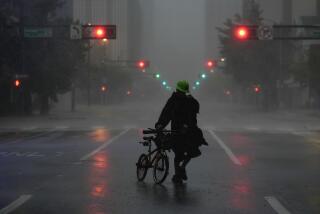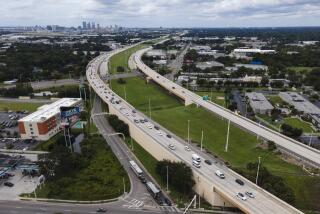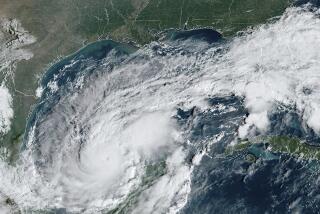Mississippi’s Gulf Coast, hard-hit by Katrina, now in Isaac’s aim
As Hurricane Isaac lumbers through the Gulf of Mexico, attention has been focused on possible landfall at or near New Orleans late Tuesday. But Isaac is so huge – at least 350 miles wide – that areas far beyond New Orleans are likely to be pounded by drenching rains and high winds from the Category 1 storm.
Especially vulnerable are low-lying coastal areas just east of New Orleans, along the Mississippi Gulf Coast. Those communities, which were devastated by Hurricane Katrina seven years ago, are bracing for tidal surges and extended rains in places that are still recovering from Katrina.
Authorities in all three of Mississippi’s coastal counties – Harrison, Jackson and Hancock – issued mandatory evacuation orders Tuesday for thousands of residents of low-lying coastal areas, bayous and rivers. Those counties suffered extensive damage from Katrina’s powerful storm surge and winds.
“We know those areas are going to flood again, so we issued the mandatory evacuation order,” said Butch Oberhoff, an emergency management official in Harrison County.
Oberhoff said forecasters were predicting storm surges and rainfall similar to those forecast for New Orleans – a 10-to-12-foot surge and 15 to 20 inches of rain over two days. Even people who don’t live in low-lying areas should expect serious flooding, he said.
“People say, ‘Well, I’m in a high spot so I’ll be fine,’ ” Oberhoff said. “But we’re not going to be able to get to you if you have an emergency.”
In Pascagoula, Miss., in Jackson County, an evacuation order covered low-lying areas south of U.S. Highway 90 along the coast, affecting up to 50,000 people, said Sgt. Doug Adams of the Pascagoula Police Department. Many people have moved in with friends or family to the north, and more than 400 entered shelters.
“And we always have a few who decide to stay on,” Adams said, speaking from an emergency management center he said survived Katrina and was designed to withstand an explosion at a shipyard that once operated nearby.
In Gulfport, Miss., which suffered catastrophic damage from Katrina, Jolene Johnson spoke from a fortified emergency management center built after Katrina destroyed the town’s Police Department. Johnson, who directs the city’s non-emergency hotline, said evacuation orders covered low-lying areas along waterways, bayous and the coast.
“People have been moving away from those areas” in anticipation of an 8-to-12-foot storm surge, Johnson said. Authorities also imposed a 7 p.m.-to-7 a.m. curfew.
Rick Knabb, director of the National Hurricane Center, said Isaac was so big and moving so slowly that a broad swath of the Gulf Coast – not just New Orleans – was likely to suffer heavy rains and widespread flooding.
“There is no avoiding this very large system,” Knabb told reporters on a conference call Tuesday. “It’s going to last a long time and affect a lot of people.”
Rains could last two days, with 20 inches or more falling in many areas, he said. The hurricane was expected to make landfall somewhere along the southeastern Louisiana coast late Tuesday.
No matter where Isaac hits, Knabb said, residents of the Gulf Coast should expect to hunker down for quite a while.
“When the center comes ashore, that will not be the end of this event,” Knabb said.
For many, he said, it will be “just the beginning.”
ALSO:
2 years for 16th DUI? Maximum allowed, prosecutors say
Bigfoot hoax ends badly: Montana jokester hit, killed by car
New fuel economy standards would boost average car to 54.5 mpg
More to Read
Sign up for Essential California
The most important California stories and recommendations in your inbox every morning.
You may occasionally receive promotional content from the Los Angeles Times.











